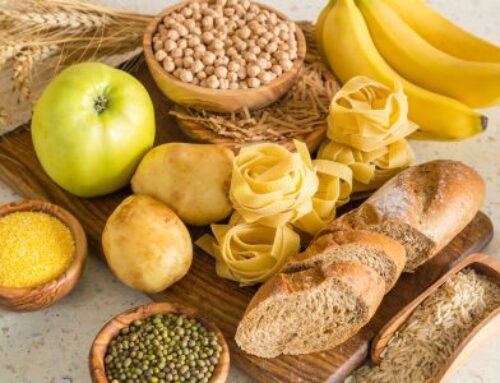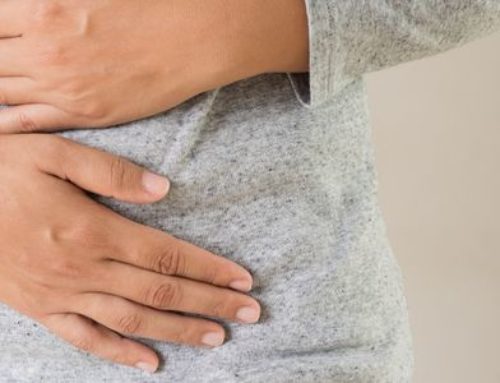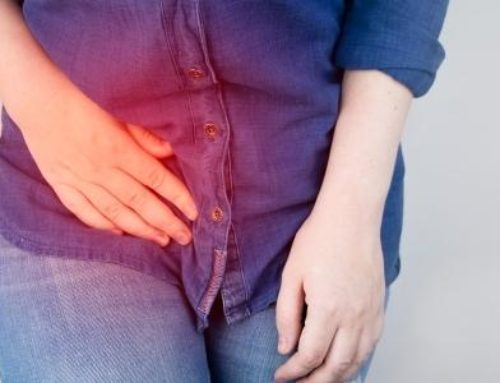
Gut health, bowel health, digestive health, gut microbiome
There are a lot of ways to say it, but the message is pretty clear, your guts have an impact on your life and wellbeing, and they are a very hot topic.
So, what does it all mean and how can you make the most of the research emerging from the realm of gastrointestinal health?
What is your gut?
Whenever we start to talk about ‘gut’ health, it’s important to be clear about what we referring to. When online articles and health professionals refer to your ‘gut’ they are most commonly referring to your intestines, particularly your large intestine. However, your whole Gastro-Intestinal (GI) tract is a very complex mix of machinery and each part has an impact on your ‘gut’ health. So, it’s valuable to know which bit does what, before we try to improve things:
Mouth
This is where we start digesting our food. We physically tear the food apart with your teeth and soften it with your saliva.
Oesophagus
Your oesophagus is a transport tube. It allows the food to get from your mouth to your stomach.
Stomach
The stomach is where you do most of the breakdown of your food. Your stomach produces acid to break your food into tiny molecules. Depending on what you ate, your food can stay in your stomach anywhere from couple of minutes, to hours. It’s only when the food is 95% broken down, that the stomach will let it move on the small intestine.
Small intestines
The small intestine is like the vacuum cleaner of your gut. This is where the last little bit of breakdown happens, through enzymes and bile. But most of your small intestine is involved in sucking up the nutrients from your food into the blood stream. The small intestine absorbs all of the vitamins, minerals, carbohydrates, proteins, fats and all manner of other food chemicals that our body will use to grow and repair itself. Thanks small intestines!!
Large Intestines (Bowels)
By the time your food reaches the end of the small intestine, all that’s left is the water and the things that we couldn’t break down like fibre. This is where we stop thinking of the food as food and start thinking of it as stool, or poo.
The job of your large intestine is absorbing the water from your poo. At the beginning of your large intestine your poo is liquid and then as it travels through your large intestine, more and more water is absorbed so that by the time it reaches the end of the large intestine your poo is hopefully a soft but solid mass.
The large intestine is also the home of your gut bacteria. All of those millions of microscopic organisms which break down many of the food products that we can’t digest and absorb. The result of this bacteria breakdown is gas and the volume of that gas can influence how your abdomen feels and the consistency of your poo.
Rectum
The rectum is the last part of the large intestine, which ends at the anus (try not to giggle). At the end of your rectum there are two circular groups of muscle, called sphincters (again, try not to giggle). One of the sphincters is under ‘involuntary control’, meaning that as soon as it senses the pressure of poo, it will open and allow the poo start trying to move out of your body. This is the sensation you get when you notice that you need to do a poo. Luckily, the second sphincter is under voluntary control, mean that we can consciously stop this sphincter from opening and hold out poo until we get to a toilet. SO COOL!
How do I support a healthy gut?
Now that we know what each part of your GI tract does, it’s clear that ‘gut health’ is all about supporting your large intestine to create a healthy poo!! (no wonder they are calling it ‘gut health’ instead).
In fact, the best sign of a healthy gut is a regular BEEP (Big, Evacuating, Enjoyable Poo).
There are a few key things that help with this:
Add helpful bacteria
If you have been through a course of antibiotics, been traveling, drinking alcohol or even changing your usual food intake, you may be changing the balance of bacteria within your large intestine and this can result in changes to your poos.
Probiotics are live bacteria that we can consume. Taking a probiotic supplement or eating probiotic rich foods can help to boost the helpful bacteria in your gut and improve your poo!
Check out this article on Probiotics and Gut Health for a deeper dive into probiotics.
Feed your bacteria
Not only do we need to get the good bacteria into your gut, we also need to keep them there by feeding them. That’s where PREbiotics come into it. Prebiotics are what you bacteria feed on and this includes fibre and fermented foods.
Fibre
Fibre is the indigestible part of your food and is vital for feeding healthy gut bacteria. Find out more about what fibre is and why we should eat it here.
You can also make some Simple Fibre Swaps and use these 10 Ways to Up Your Vegetable Intake to get started feeding your bacteria with fibre today.
Fermented Foods
These are are all the rage at the moment. Fermented foods are foods that have been exposed to bacteria and have started to break down before we eat them. This breakdown, or fermentation, creates biproducts that the bacteria in our gut like to feed on. If you’re keen to use some of these foods to feed your gut bacteria check out your full article on Fermented Food and Gut Health
Looking for more ways to feed your bacteria? Check out these articles:
- Rally Your Bacteria! 4 Simple Tips to Spark Your Own Gut Revolution
- 10 Foods that Feed Your Gut Bacteria
Fluid
Being well hydrated is one of our Top Tips for Gut Health because water is such an important part of your poo. If we don’t have enough water, the fibre in your poo can start to dry out, which means it moves slowly through you large intestine and can become difficulty to pass. A bit like when you cook porridge without enough milk and it starts to become a bit like concrete.
Staying well hydrated can go along way to a healthy gut.
Movement
When you move your whole body, we stimulate the muscles that line your GI tract to move as well. These GI muscles help to push and squeeze your poo through your large intestine at a steady pace. This helps to control how much water is absorbed from your poo. If we are moving our body very little, our poo can move too slowly through your large intestine and become dry and difficult to pass.
Check out our Top Tips for Staying Active for some inspiration on how to get and keep moving
Managing irritants
There are many chemicals in our food that can upset anyone’s gut and cause changes to your poo. These include alcohol, caffeine, chilli and fatty foods.
There are also a range of medications which can affect your normal bathroom rhythm.
While we may not be able to avoid these (or we may not want to), being aware of them can help us to be more moderate, and help our gut feel as happy and healthy as possible.
Looking for some gut health hacks to try, have a read of our Quick tips for Healthy Bowels or Habits for a Healthy Gut.
How do I know if my gut isn’t ‘healthy’?
Our body is very good at sending us signals when something isn’t right with our GI tract. Some of the signals that something is amiss are:
Recent changes
Everyone’s gut is different so there is no perfect poo. If you’re used to having 2-3 poos a day or 1 poo every other day, that’s okay. But, if you have noticed changes in the frequency or texture of your poo, this could be a sign that your GI tract isn’t happy.
Bloating and distension
Bloating and distension is when the lower abdomen is so full of gas, that it causes discomfort and pushes the abdomen out.
This may be caused by being constipated. But, it may also be the result of lots of gas being produced by your bacteria. Sometimes this is a sign of an imbalance in bacteria or that you have an intolerance to certain foods.
Cramping & Pain
The muscles that line your large intestine are constantly squeezing and pushing your poo through the tube. If there is a build-up of gas and pressure in this tube it can mean that the muscles aren’t able to squeeze as they normally would, causing muscle spasms.
Or, if your muscles are getting lots of signals from the brain or they are being stimulated by certain irritants, the muscles can become overactive.
Both of these things can result in the sensation of abdominal cramping and pain. There are lots of possible triggers for cramping. These symptoms can be so disruptive to your quality of life so it’s worth investigating what those triggers are.
Straining to pass a poo
If you need to sit on the toilet for a long time to pass a poo, or if you have to push really hard, you may be experiencing constipation. There are lots of things that contribute to constipation and lots of steps you can take to reduce this. Find out what they are in Constipation: Not giving a …
Urgency
If you find yourself having to rush to the toilet, without much warning, this may be a sign that your poo is moving through your large intestine too quickly. It may be that your muscles are pushing poo through too quickly or that there is something in your food your GI tract doesn’t like.
Loose poos
The occasional loose poo is not necessarily a problem. But, if you are having multiple loose poos in a day and it’s coming along with other symptoms listed above, this may be another sign that your poo is moving through your large intestine too quickly.
Blood in your poo
This is something to keep an eye on. Blood in your poo can be the result of straining and pushing too hard, which can cause small blood vessels in your rectum to burst. But blood in your stool can also be a sign of more serious conditions like Inflammatory Bowel Disease (IBD). This is something to talk to your GP about ASAP.
What can I do about an unhealthy gut?
Luckily, as our understanding of gut health has grown, so has the investigation and management GI symptoms like the ones above. In the past, these symptoms may have been attributed to Irritable Bowel Syndrome (IBS) and no further steps were taken. Find out more about this in our article: Is it really IBS?
1. Rule out ‘sinister’ problems
There are some serious health conditions which may cause changes to your poo and your GI symptoms. These include:
- Gastroenteritis
- Coeliac disease
- Inflammatory Bowel Disease
- Diverticulitis
- Forms of bowel cancer
- Changes to the structure of the bowel.
It’s important talk to your doctor about investigating these possible causes of your symptoms. Left unchecked, these could have serious consequences.
2. Cover the basics
As we mentioned, making sure you have the right balance of helpful bacteria, fibre, fluid and movement can make a world of difference to your bowel health. By making sure we are on the right track with, we also make investigating other causes of your symptoms much easier.
Are you getting enough fibre? Find out here.
You may even need to supplement your fibre intake. Check out this article to learn if this is you: Fibre: to Supplement or not to supplement?
3. Investigate intolerances.
While it’s possible that you may have an intolerance to particular foods, removing things from your diet randomly will not give you a clear picture of your tolerance levels. Investigating intolerances like FODMAPs or food chemicals requires a clear and systematic approach, so that you can work out exactly what your triggers are and how much you can tolerate.
This is where working with an Accredited Practising Dietitian is key. Your dietitian can help make any elimination process easier and then help you test and challenge foods in a clear step-by-step way.
4. Create your own gut healthcare plan
Once you know the key elements that give you a BEEP, you can then be back in the driver’s seat. No more confusion about what caused your symptoms, no more getting caught out by the urgency to do a poo. You know what’s going to happen if there are changes to your fibre, fluid, movement or you’re exposed to a triggering food, and you can take steps to feel better quickly.
This may also involve a range of alternative management strategies, that you can explore with a dietitian. Read our Guide to Alternative Investigations for IBS here.
For more information on Navigating Common Digestive Problems, read this article now.



